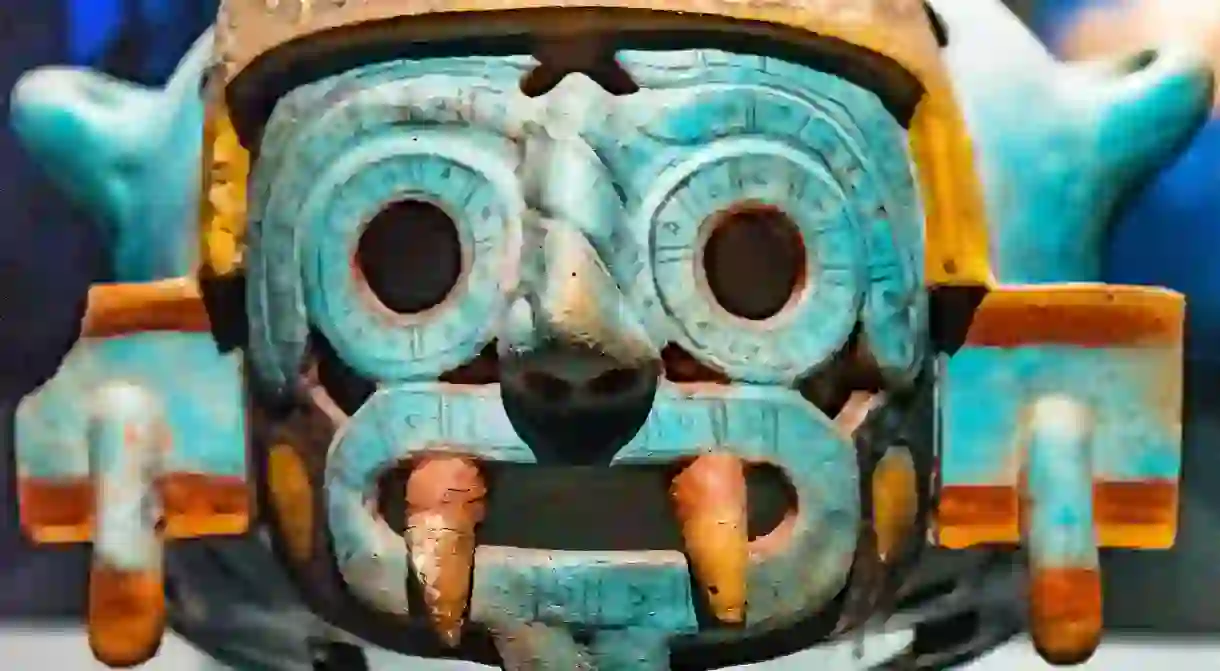Here's Why the Aztec Death Whistle is Mexico's Most Terrifying Musical Instrument

In 1999, archaeologists excavating the temple of Tlatelolco discovered the skeleton of a 20-year-old sacrificial victim who was clutching two skull-shaped figurines. Historians initially thought the clay sculptures were mere toys and they were catalogued and stored in a museum warehouse. It was not until years later that someone decided to blow into the clay device. The haunting, screaming sound that emerged from the whistle has redefined our understanding of pre-Hispanic instruments and rituals.
Archaeologists have found instruments made of clay, animal skins, sea shells and other materials at Aztec and Mayan sites across Mexico. Yet there is still considerable debate about what exactly these instruments were used for.
Some scholars believe that the skull-shaped whistles found in Tlatelolco were used to recreate the screech of howling wind, because they were found in a temple dedicated to the wind god Ehecatl. The instruments are known as “whistles of death” because historians believe they were used to help guide sacrificial victims on their journey to the afterlife.
Another theory holds that hundreds of the instruments were used in unison to scare enemies during battle.
Did you know – Culture Trip now does bookable, small-group trips? Pick from authentic, immersive Epic Trips, compact and action-packed Mini Trips and sparkling, expansive Sailing Trips.
Combining sounds

Researchers have also experimented with the effects produced when the instruments are played together at the same time. In unison, the two skull whistles found in Tlatelolco generate a sound that evokes a storm. Two whistles omit a greater range and intensity of frequencies.
Some experts even believe that the Aztecs used sound vibrations to treat illnesses, because some of the whistles produce infrasonic sounds that are too low for the human ear to recognize. Such sounds can have a dramatic impact on heart rates and states of consciousness.
Researchers are currently exploring whether the whistles were used to send patients into a hypnotic state or alleviate pain.
The death whistle comeback
What is certain is there has been a massive revival of interest in the topic of death whistles in recent years.
Roberto Velazquez, a Mexican mechanical engineer, has spent years investigating the unusual instruments. He has produced hundreds of replicas of the instruments found in Mexico’s various archaeological sites.
The musician and instrument maker Xavier Quijas Yxayotl has also helped popularize the death whistle. As part of the group Indigenous America, Quijas Yxayot has performed with pre-Hispanic instruments at countless festivals, concerts and special events. He also made the instruments used in Mel Gibson’s 2006 film Apocalypto.
A unique souvenir
Today, death whistles are sold in many Mexican markets and archaeological ruins. The clay instruments are usually fashioned in the shape of a skull, owl or Aztec deity, although other designs are also found. Etsy, the online market for handcrafted goods, offers a range of death whistles. Quijas Yxayotl also sells handcrafted death whistles on his website.













